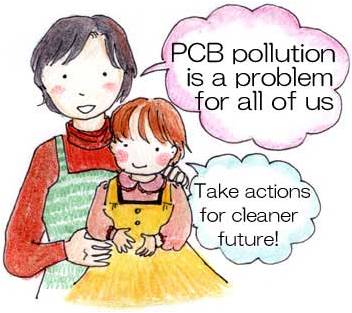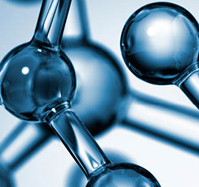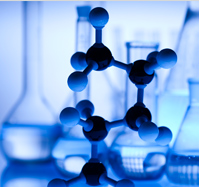Impacts of PCBs on health and the environment
Environmental contamination
PCBs are identified as persistent, bioaccumulative and toxic (PBT). Because of their persistence, PCBs continue to be found in the environment and contamination from legacy sources remains a problem. In addition, PCBs are not prohibited in some products at concentrations below 50 ppm. PCB concentrations of less than 50 ppm are considered to be “PCB-free.”
Like many organochlorine compounds, many of the congeners are highly persistent and accumulate within food chains. Investigations in many parts of the world have revealed widespread distribution of PCBs in the environment. The universal distribution of PCBs throughout the world, suggests that PCBs are transported in air (2). The ability of PCBs to co-distil, volatilize from landfills into the atmosphere (adsorption to aerosols with a particle size of < 0.05–20 μm), and resist degradation at low incinerating temperatures, makes atmospheric transport the primary mode of global distribution. In a study in the USA, 92% of the PCBs detected were in the vapour phase (2). In a German study, congeners with a low degree of chlorination were dominant in filtered air, whereas those with a high degree dominated in aerosols and rainfall (2)
Health Effects of PCBs
Although PCBs are readily absorbed into the body, they are only slowly metabolized and excreted and a growing number of studies have found serious health effects from exposure to PCBs.
- Acute toxic effects: People exposed directly to high levels of PCBs, either via the skin, by consumption, or in the air, have experienced irritation of the nose and lungs, skin irritations such as severe acne (chloracne) and rashes, and eye problems.
- Cancer: The International Agency for Research on Cancer (IARC), as part of the World Health Organization (WHO), measures the carcinogenic risk of various chemicals and PCBs and places them in group 2 B: probably carcinogenic to humans with evidence “less well established”.
- Heart Disease: PCBs cause an elevated risk of cardiovascular disease, hypertension and diabetes.
- Hormonal Impacts: PCBs can alter the sex hormone systems, and have been found to lower the age at which a girl reaches puberty and can reduce the levels of the male hormone, testosterone.
- Asthma: PCBs cause an increased risk of asthma and other infectious respiratory diseases. More specifically, children have an increased risk of asthma and other infectious respiratory diseases when exposed to persistent organic pollutants, including PCBs.
- Birth Weight & Infant Motor Skills: Women who are exposed to PCBs have babies that weigh slightly less than babies from women who have not been exposed. In addition, children born to women who ate PCB contaminated foods have abnormal responses in tests of infant behavior, including problems with motor skills and a decrease in short-term memory.
- Ability to Learn: PCBs are associated with cognitive problems and a reduction in the ability to learn and remember. Other studies have reported reduced alertness and increased tiredness in association with PCBs.

How to reduce the risk of exposure to PCBs?
- To lower your family’s PCB intake, minimize the amount of animal fat you eat and make all seafood choices carefully. Cooking fish and meat so the fat drips away from the flesh is another way to reduce the PCBs in your finished meal.
- Children should be told that they should not play with old appliances, electrical equipment, or transformers, since they may contain PCBs.
-
If you are exposed to PCBs in the workplace, you
should shower and change clothing before leaving work, and your work clothes
should be kept separate from other clothes and laundered separately.
Bio-accumulation of PCBs in the organism
Some laboratory test on animals have shown that PCBs are easily absorbed through all exposed areas and remain for the most part in fatty tissue, where they tend to accumulate. More than 90% of ingested PCBs cross the intestinal walls and are retained in the organism. The organ favoured by PCBs is the liver, which stores them (the development of both malign and benign tumours has been observed in mice which have absorbed PCBs and in monkeys, whose sensitivity to these products is closest to that of humans).
They case:
Actual toxicity of PCBs
Studies of cases of poisoning caused by accidental absorption of doses measuring 800-1,000 mg/kg of PCB show that the first areas to show symptoms are the skin (acne, hyperpigmentation, keratosis, hypersudation) and the eyes (oedema of the eyelids, watering of the eyes). More general symptoms (fatigue, anorexia, weight-loss), liver disorders, bronchitis, certain peripheral neuropathies and endocrine disruptions complete the clinical picture. These symptoms recede after about a year.
Anomalies have been observed in the children of women who, during pregnancy, have consumed PCB-contaminated oil. These anomalies are primarily found on the skin, in mucous membrane and the epidermis. Occupational exposure can cause irritations of the skin and the mucous membrane (eyes and respiratory system), chloracne and, with stronger concentrations, liver disorders.
Carcinogenicity of PCBs
Epidemiological studies have shown no significant increase in the incidence of cancer among people exposed to PCBs. Skin, digestive and liver tumours, and also instances of leukaemia, have been attested, however, but scientific analyses have failed to establish a link between increased skin and pancreatic cancer rates and occupational exposure of the victims to PCBs. The International Agency for Research on Cancer (IARC), which is part of the World Health Organization (WHO), measures the carcinogenic risk of various chemicals and PCBs and places them in group 2 B: probably carcinogenic to humans with evidence “less well established”.
Toxicity of products resulting from the breakdown of PCBs
When PCBs are broken down by heat, they produce – first and foremost – chlorine, hydrochloric gas and carbon monoxide. Hydrochloric gas vapours can cause serious irritation of the respiratory tracts, exposed skin areas, the mucous membrane (particularly of the eyes), resulting in pharyngitis, laryngitis, bronchitis and inflammation of the eyes. In strong concentrations there is a risk of acute pulmonary oedema. Therefore, a transformer which has been damaged should never be sniffed. In the event of fire or decomposition, PCBs also produce, where oxygen is present, small quantities of toxic compounds which belong to the family of furans and dioxins.
PCBs Serbia
Articles
The aim of this page is to show information on health effects, environmental impact, technical information and general information on polychlorinated biphenyls commonly known as PCBs. The main scope is to inform Serbian audience about National PCB Management Plan, all relevant legal framework and regulations in the Republic of Serbia and worldwide. This web page will help all potential PCBs owners to find all relevant information on technical guidelines, safety procedures, protocols and standard operating procedures for PCBs contaminated oils, equipment and soil, list of services, analytical procedures, laboratories, etc.

The Stockholm convention
The Stockholm Convention on Persistent Organic Pollutants (POPs) was adopted by the Conference of Plenipotentiaries on 22 May 2001 in Stockholm, Sweden. The Convention entered into force on 17 May 2004.
READ MORE
PCBs
Polychlorinated biphenyls (PCBs) are aromatic, synthetic chemicals which do not occur naturally in the environment. They consist of the biphenyl structure with two linked benzene rings in which some or all of the hydrogen atoms have been substituted by chlorine atoms.

Where PCBs could be found?
PCBs were first identified in the nineteenth century and started being manufactured on an industrial scale in 1929. They were intensively used between 1920 and 1980.
READ MORE
Impacts of PCBs on health and environment
PCBs are identified as persistent, bioaccumulative and toxic (PBT). Because of their persistence, PCBs continue to be found in the environment and contamination from legacy sources remains a problem.
READ MORE



